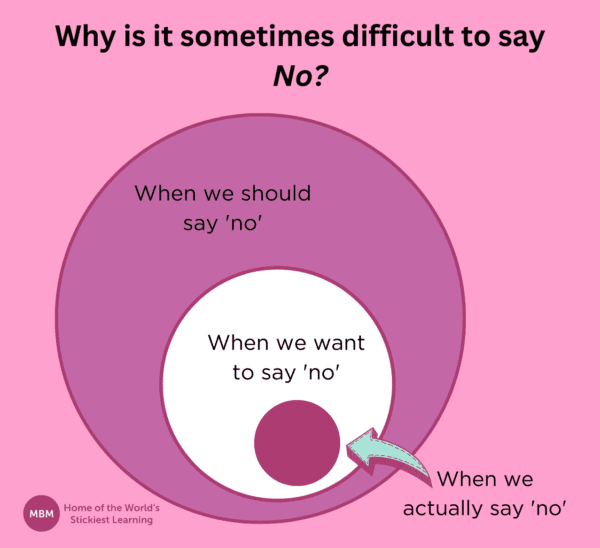How Do You Say No?
Saying that little word to someone is hard, ‘No’. They’ll hate me…I’ll look terrible…the world will collapse into fire & brimstone. We want to be seen as helpful to others, and kind, and saying that word will create conflict.
In my 20 years of training of negotiation and conflict skills, I have learnt that no-one likes conflict. Some say they do. They don’t. Unless they are just very odd. Conflict is hard, so creating new conflicts are avoided.
The Thomas-Kilmann model shows us that there are 5 behaviours in conflict, and we’ll default to one based on our nature and nurture: collaborating, competing, avoiding, accommodating, and compromising. One is not better than the other.
The trick is knowing which one you are and adapting when the situation requires it. Back to saying no – There is another way…

Saying No: The Tree Model
I pinched with pride this tree model and I have been using it for over 20 years. The California University talks about the Say No Tree Model on their website. It has helped me to help thousands of learners when they negotiate and also in time management. The challenge of time management is not to find more of it, but to choose what you do with it and the biggest challenge of all is to say no to that which does not achieve your objectives. Easy to say, hard to do. I get that. The tree will help.
Imagine a big old Oak tree. Majestic and triumphant in its size. This is you with your roots that are grounded in your values. Obvious values like, thou shalt not, etc. Then, on top of the being-a-human values are those that are important to you. For example, you promised your partner you’d get home earlier one night a week, so you need to say no to extra work, or you will not do a task badly – you’d rather not to do it at all. The roots are you. The trunk is simply ‘No’. You don’t have to say it, just know that you will need to refuse this thing being asked of you because it conflicts with your values, ways of working, and who you are.

The Branches…
Now we come to the branches. These represent options and they are many. Next time, instead of saying no to the thing you don’t want to do, instead, offer options. For example, ‘Here are some options of how I could do what you need; I could ask Rob to do my xyz today, or maybe do this for you on Monday next week, or stop doing the abc project instead.’
The important part is that you are not saying no to the person, which causes the conflict because it can be a catalyst for fight or flight. For example, a boss fights and says ‘JFDI’, or a colleague flights and speaks badly of you to others. You are saying yes with these options.
This article was written by Darren A. Smith for The Grocer.




